Physical Address
304 North Cardinal St.
Dorchester Center, MA 02124
There are three major anatomic regions that may contribute to right lower quadrant pain. Organ systems with differential diagnoses include:
Gastrointestinal system: cecum, ascending colon, appendix.
Acute appendicitis.
Acute cecal diverticulitis.
Inflammatory bowel disease.
Bowel obstruction, ileus.
Mesenteric lymphadenitis.
Meckel diverticulum.
Genitourinary/gynecological system: right ovary, right fallopian tube.
Tuboovarian abscess.
Ovarian cyst or tumor.
Ovarian torsion.
Ectopic pregnancy.
Fibroids.
Musculoskeletal system: right lower ribs, right anterolateral abdominal wall muscles.
Radicular symptoms (disk prolapse/protrusion).
Sacroiliitis.
Herpes zoster.
Abdominal wall or iliopsoas abscess/hematoma.
Retroperitoneal hemorrhage.
Abdominal ultrasound has limited performance characteristics for adults with right lower quadrant pain. However, in children and pregnant females, ultrasound is the initial imaging modality of choice, especially if appendicitis is suspected as the cause of right lower quadrant pain.
If a pelvic etiology is suspected as the cause of right lower quadrant pain in a female, pelvic ultrasound is the initial imaging modality of choice.
According to the American College of Radiology Appropriateness Criteria, computed tomography (CT) with intravenous contrast is the primary diagnostic imaging modality of choice for the evaluation of patients with right lower quadrant pain because of its high diagnostic yield and early diagnosis of complications like perforation of the appendix.
Magnetic resonance imaging (MRI) without contrast is the next imaging modality of choice in pregnant females if ultrasound is nondiagnostic.
Oral contrast is generally not administered in emergency settings because of time delay, inability of patients to ingest large volumes of fluid, and potential need for emergency surgery. Lack of oral contrast may be a disadvantage in patients with paucity of intraabdominal fat, limiting detection of the appendix and subtle inflammatory changes in the right lower quadrant. Identification of bowel wall thickening and luminal narrowing is also limited without enteric contrast.
Rectal contrast is also used at some institutions for right lower quadrant pain if appendicitis is the suspected etiology.
T2-weighted sequences are the most important sequence for visualization of a fluid filled appendix, adjacent free fluid, and inflammation.
Appendicitis is the most frequent cause of acute abdominal pain requiring surgical intervention and is the most common emergent abdominal operation performed in the United States.
In the younger population, ultrasonography may be used as an initial imaging evaluation to avoid ionizing radiation.
The typical ultrasound findings of appendicitis include visualization of a noncompressible, blind-ending tubular structure that is distended with fluid and measures more than 6 mm in diameter during graded compression.
Appendicoliths may be visualized as echogenic, shadowing foci within the lumen of the appendix ( Fig. 11.1 ).
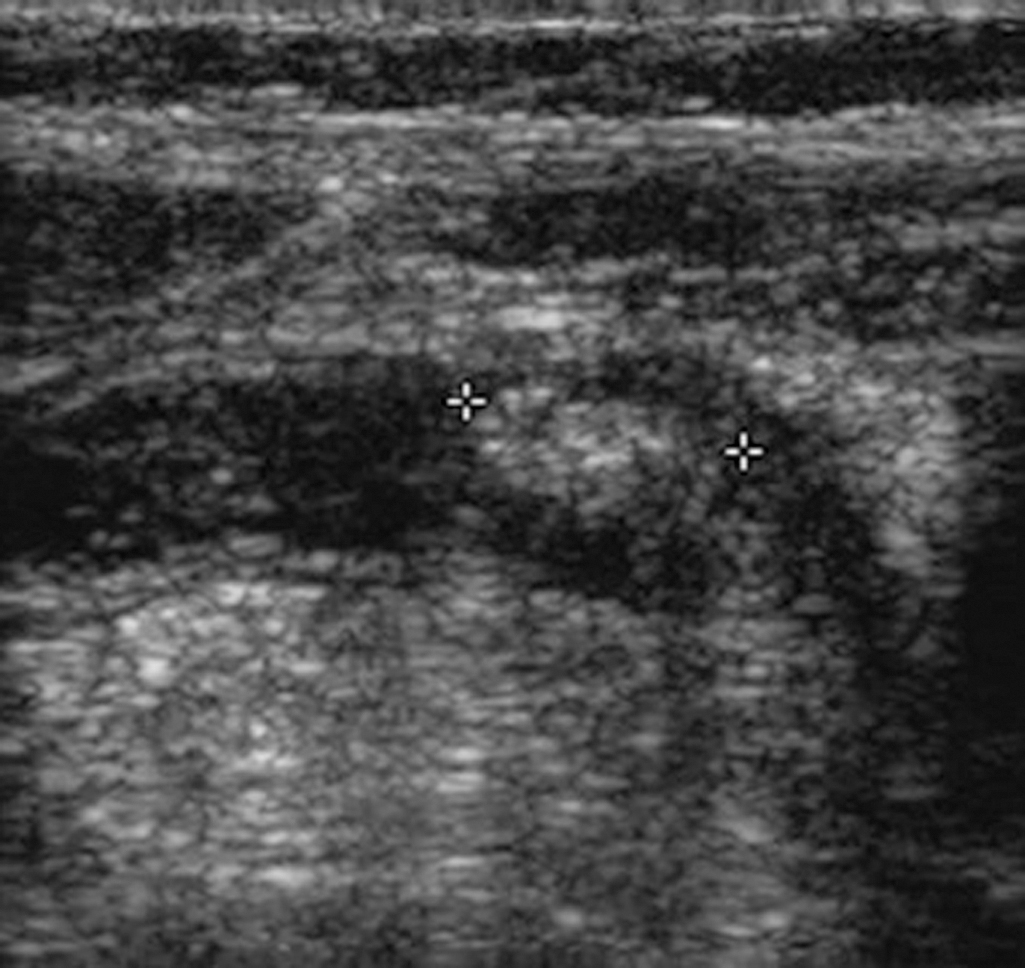
Enlarged and distended appendix, with surrounding inflammatory changes, fascial thickening, and small amounts of free intraperitoneal fluid ( Fig. 11.2 ).
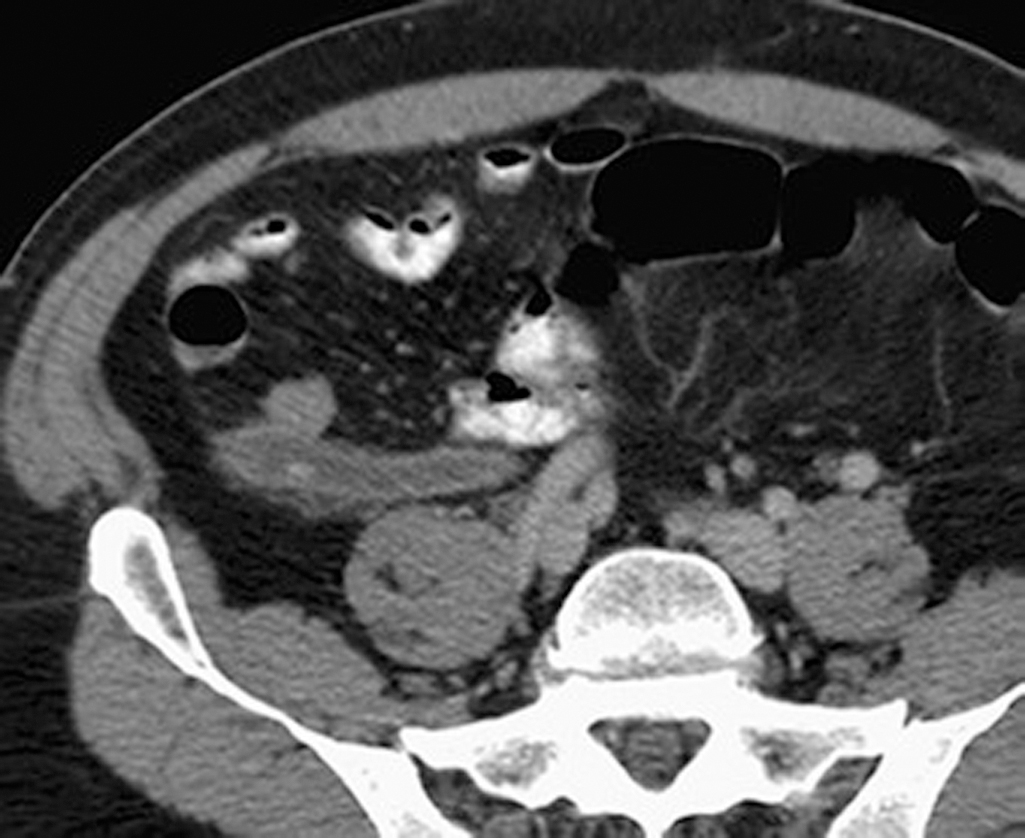
Arrowhead sign: edema at the origin of the appendix with thickening of the adjacent cecum.
There is a wide variation in the diameter of the appendix in normal patients, with sizes ranging up to 1 cm. However, mean values range between 5 and 7 mm depending on whether the appendix is distended with air. Therefore when the appendix measures slightly greater than the standard cutoff value of 6 mm, secondary signs of inflammation should be sought to determine whether appendicitis is present.
Filling of the appendix by orally or rectally introduced positive contrast material is a useful imaging finding in excluding obstruction of the appendix and, therefore, acute appendicitis.
The most important complication of acute appendicitis that should be recognized with CT is focal appendiceal rupture. Signs of rupture include periappendiceal abscess, extraluminal gas (localized or free), free peritoneal fluid, and focal poor enhancement of the appendiceal wall ( Fig. 11.3 ).
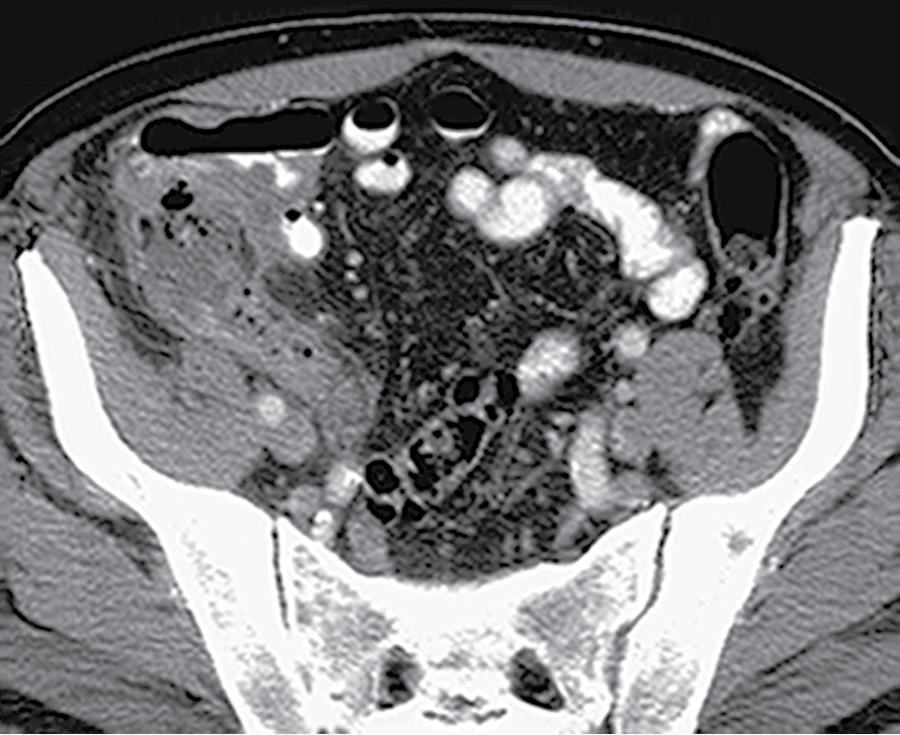
MRI is frequently used to evaluate for suspected appendicitis in pregnant patients ( Fig. 11.4 ).
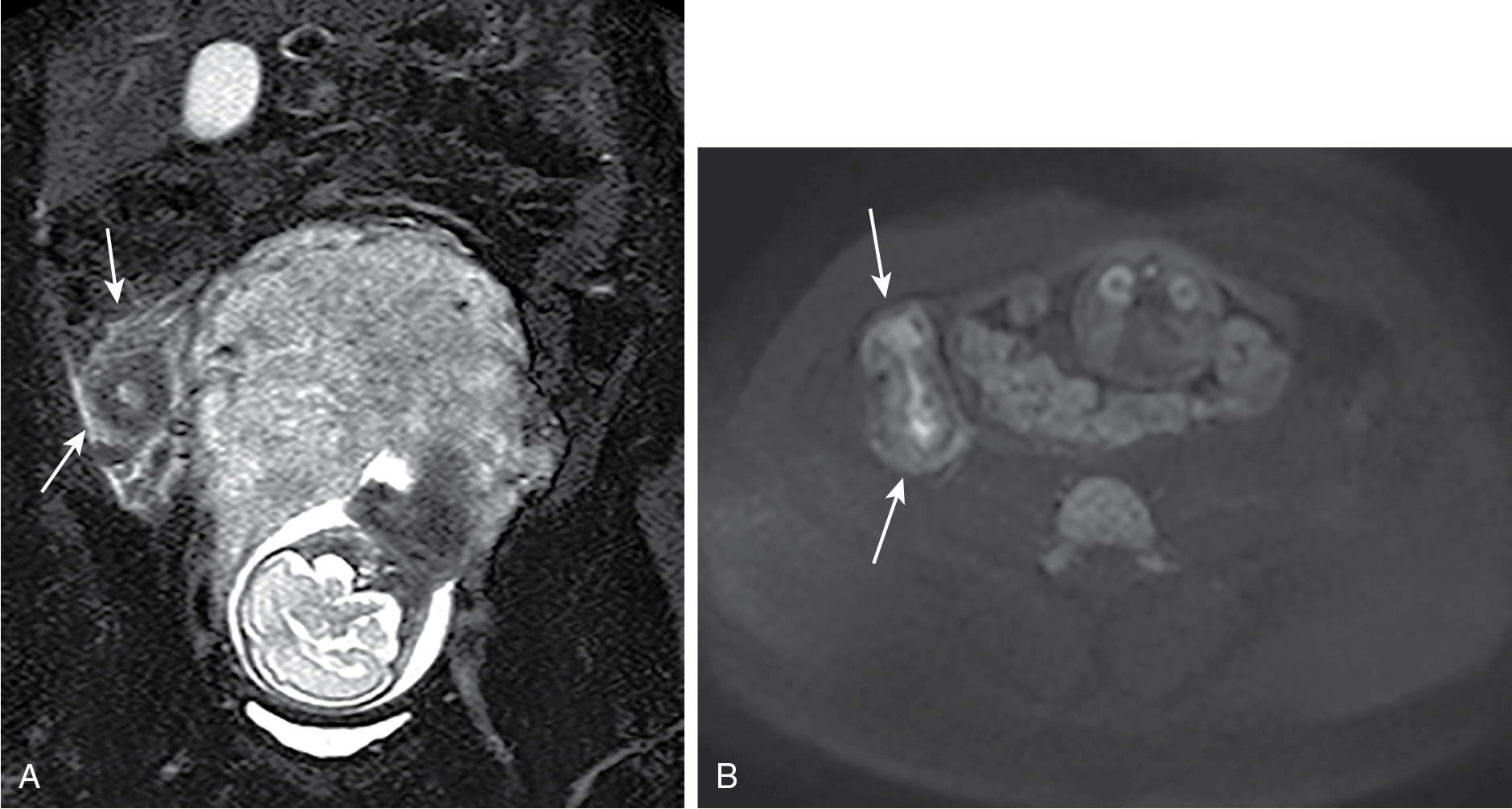
MRI offers high diagnostic accuracy and is an excellent modality for excluding appendicitis. The appendix may be considered normal when it is 6 mm or less in diameter or is filled with air or oral contrast material.
As on CT, MRI findings of appendicitis include enlargement of the appendix and associated secondary findings, such as periappendiceal inflammation ( Fig. 11.5 ).
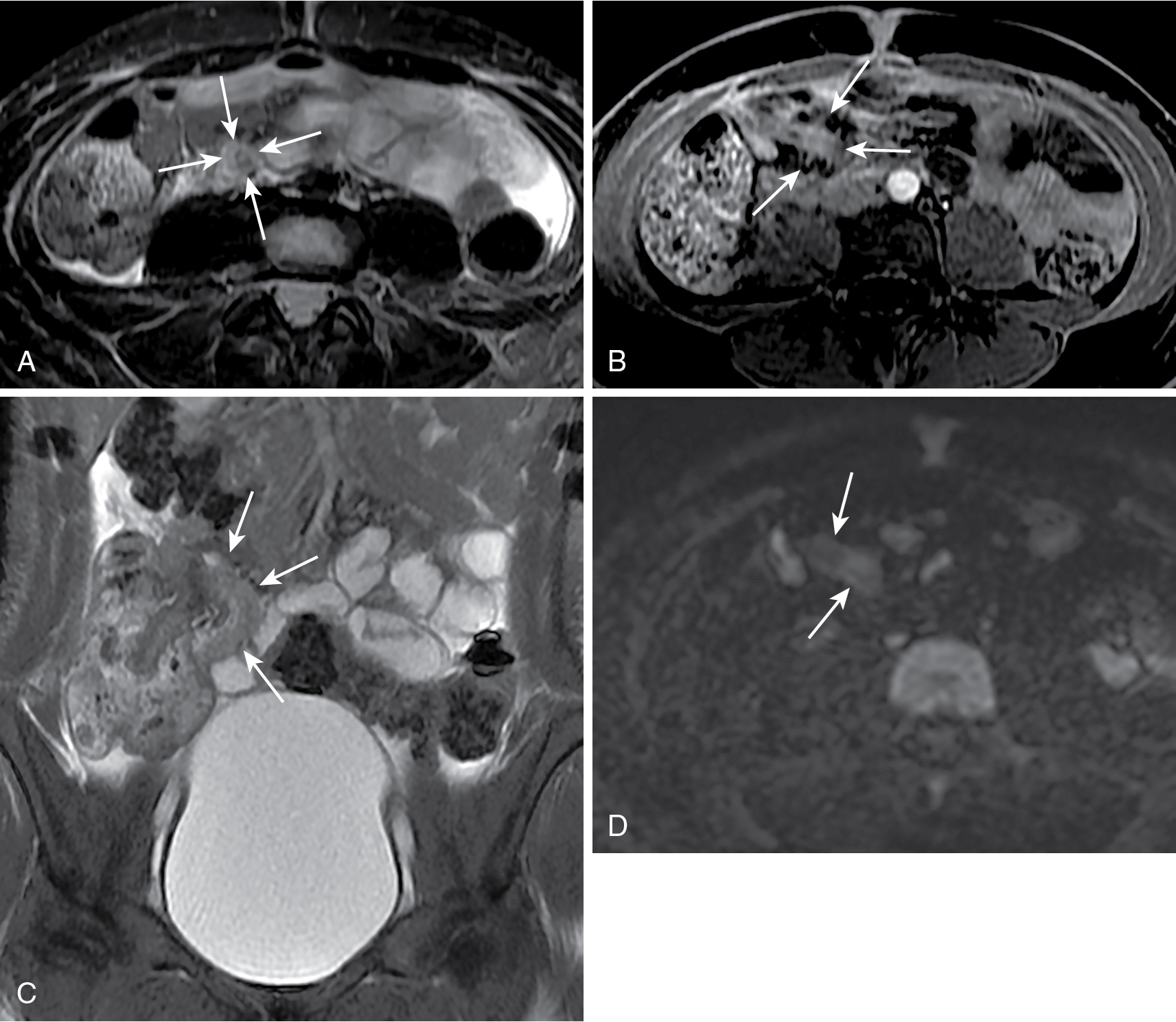
As the gravid uterus enlarges, the cecum, and therefore the appendix, may be in atypical locations, displaced superiorly. Therefore it is helpful to identify the landmarks of the terminal ileum and cecum in attempting to localize the appendix on MRI.
Become a Clinical Tree membership for Full access and enjoy Unlimited articles
If you are a member. Log in here